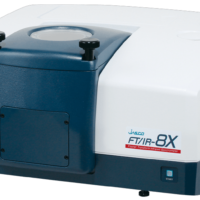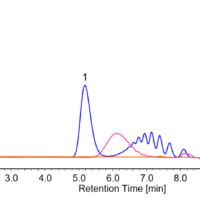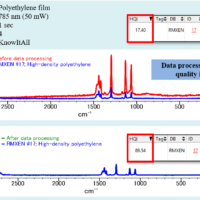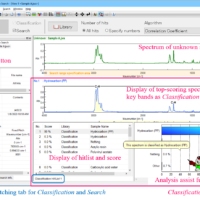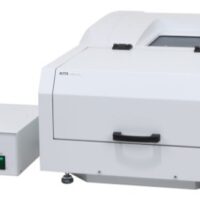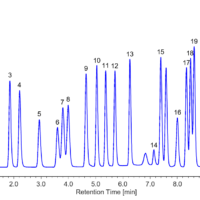Introduction
Generally, Mid-IR spectroscopy (4000~400 cm-1) is widely used for qualitative and quantitative analysis of the substance (mainly organic substance), since the information on normal vibration and rotation of molecule can be obtained. Apart from this, Near-IR spectroscopy (15000~4000 cm-1) utilizing overtone and combination tone is used with a focus on the non-destructive quantitative analysis of food, drug and various industrial products, and Far-IR (Terahertz) spectroscopy (400~10 cm-1) using stretching and lattice vibration between heavy atoms is used with a focus on the quantitative analysis of inorganic substance and crystal structure analysis. One spectrum in Mid, Near and Far-IR range can be measured using a single FTIR instrument by changing four elements such as light source, detector, beam splitter (BS) and windows. Namely, one FTIR instrument enables to obtain the information on overtone, combination tone, lattice vibration as well as normal vibration for overall evaluation of a sample. This time JASCO has developed the automatic wide-range measurement system to measure in the range from Near-IR to Far-IR fully automatically. Our FTIR instruments are originally equipped with the automatic switching system for light source and detector, and automatic wide-range measurement system provides automatic switching for BS and windows. In this article, the details of the system and measurement example using automatic wide-range measurement system are illustrated.
System
Figure 1 shows the external appearance of FTIR automatic wide-range measurement system, which combines automatic BS switching unit and automatic windows switching unit (or automatic gate value unit). Light source, detector, BS and windows are automatically switched so that the measurement can be carried out in the wavenumber range set in the software.
One of the most significant example is a measurement with ATR method in Mid and Far-IR range with automatic wide-range measurement system. For measurement in Far-IR range, full vacuum FTIR system is necessary to prevent absorption by water vapor in the air. In case of transmission method in which diluent materials are different depending on measurement range, the sample needs to be replaced since the different sampling is required depending on the measurement range. On the other hand, in ATR method, the sample doesn’t need to be replaced irrespective of the measurement range since the sampling is unnecessary. Therefore, the spectra in Mid and Far-IR can be measured with keeping cohesiveness between sample and prism, which is a very important aspect for the vacuum state of FTIR and ATR method.
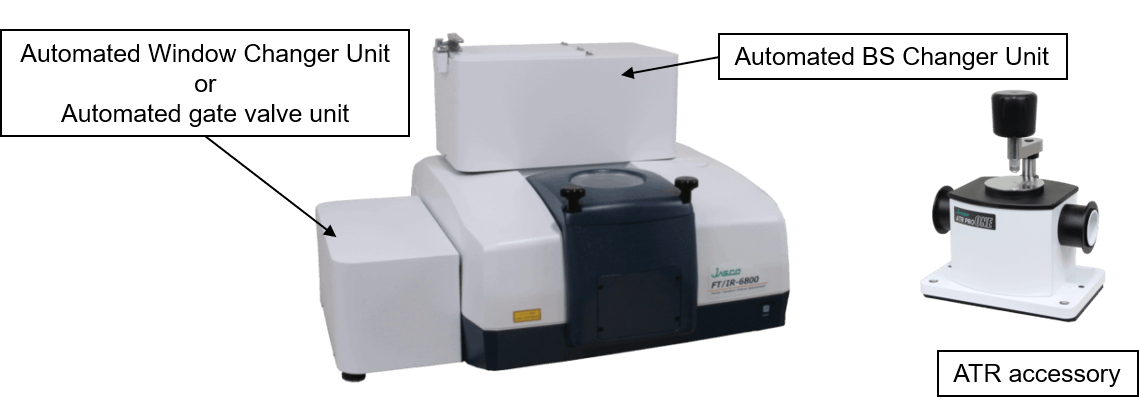
Figure 1 FT/IR-6800FV + automatic wide-range measurement system and ATR accessory
Experimental
For identification of carbonate and determination of crystal structure, the spectra in the range of 4000~100 cm-1 were measured.
Figure 2 shows the spectra of barium carbonate and calcium carbonate. The typical absorption band of carbonate can be confirmed at around 1400 cm-1 in the spectra of Mid-IR range, but it is difficult to discriminate barium carbonate from calcium carbonate. On the other hand, in the spectra of Far-IR range, the absorption peaks are shown at different wavenumber and so the difference can be clearly identified. Carbonate are often contained as a foreign material and now it is recognized that the system used in this report is useful by identification of carbonate as foreign material.
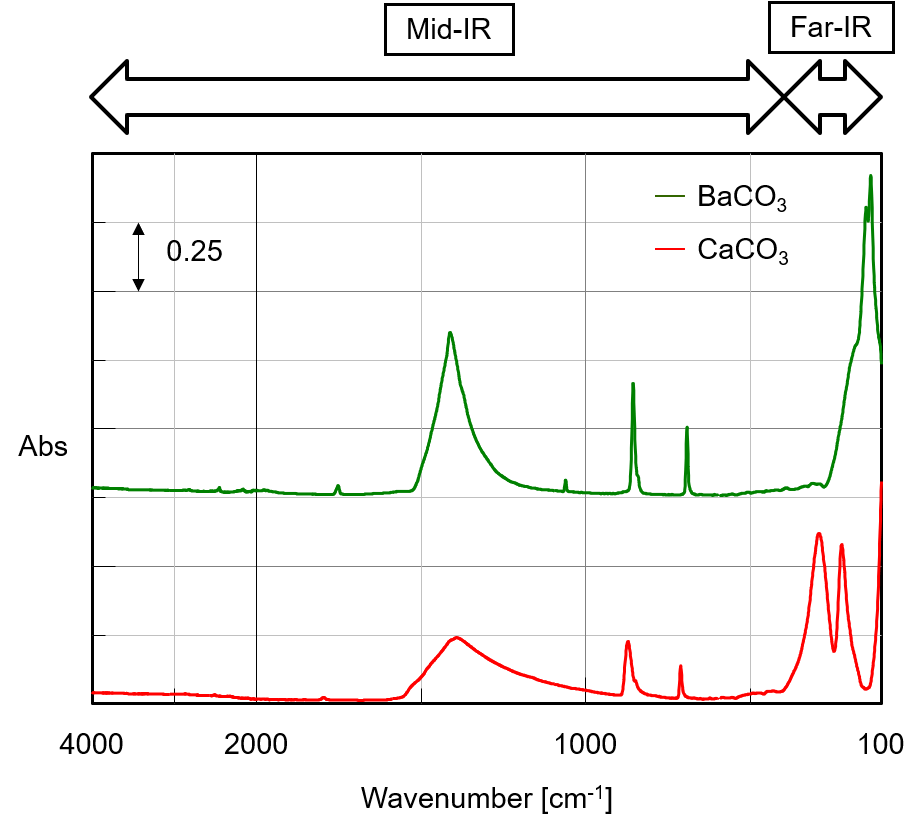
Figure 2. Spectra of barium carbonate and calcium carbonate (X-axis: 4:1 display, Y-axis: Offset)
Figure 3 shows the spectra of calcium carbonates that have different crystal structures. As shown in Figure 3, the pattern of peaks is also different in Far-IR range, and the difference in crystal structure can be easily identified.
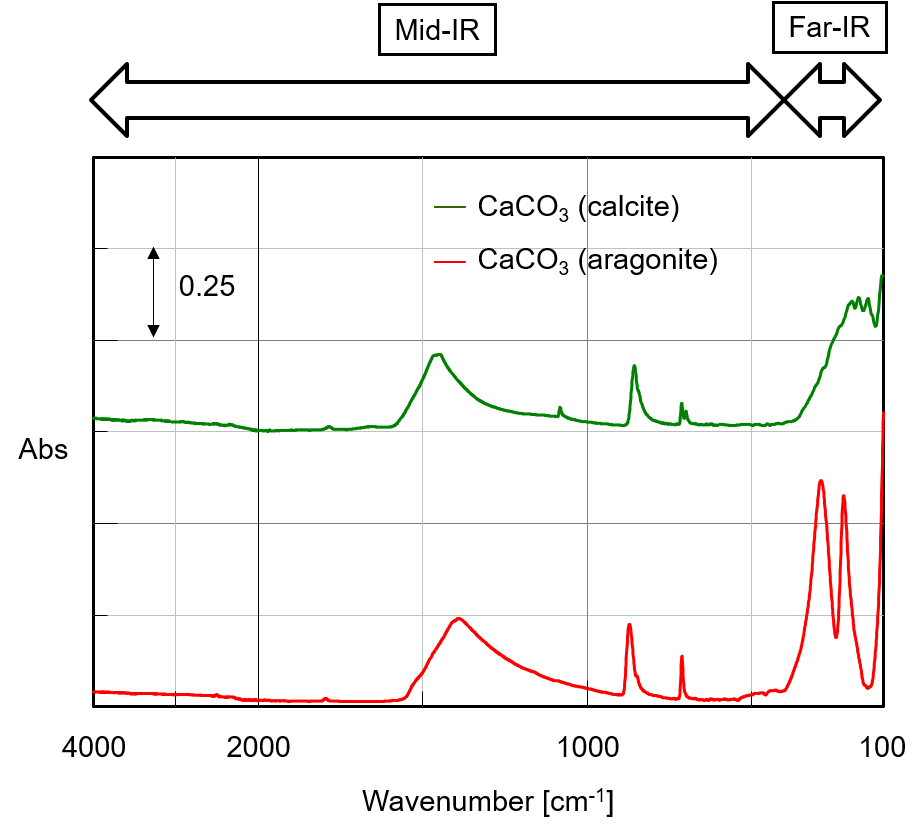
Figure 3. Spectra of calcium carbonates that have different crystal structures (X-axis: 4:1 display, Y-axis: Offset)
As stated above, the information on inorganic compound included in sample and crystal structure as well as the structure of organic substance can be obtained by using the automatic wide-range measurement system and measuring spectra in Far-IR as well as Mid-IR range.

